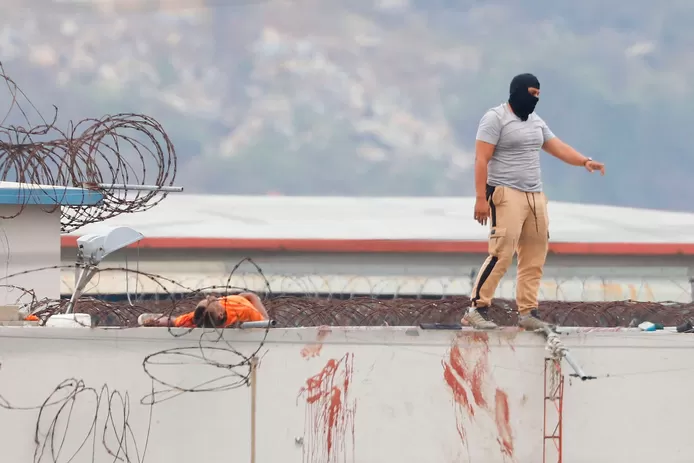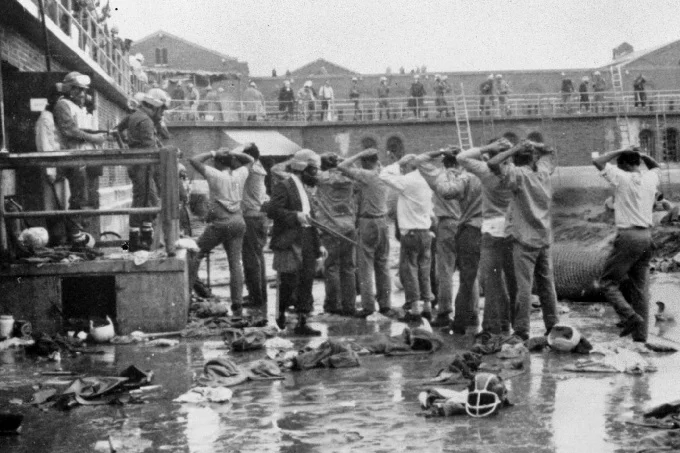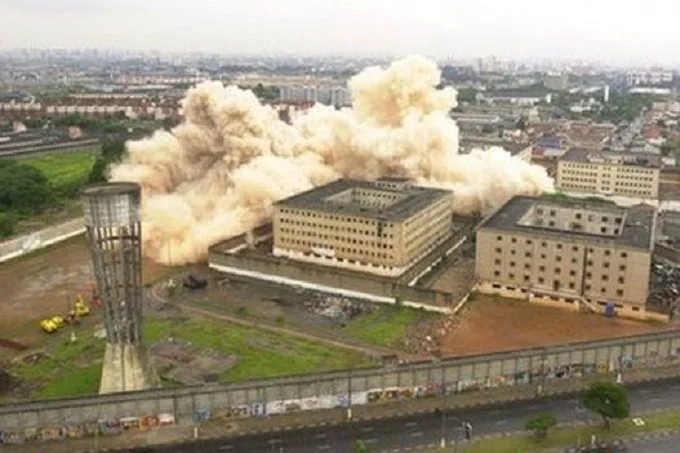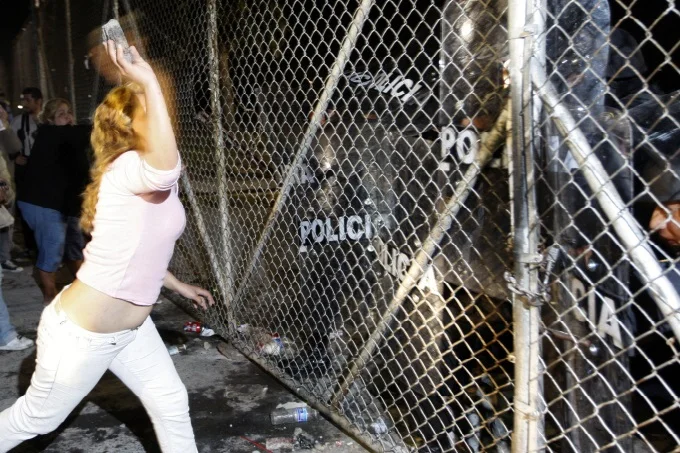The largest and bloodiest prison riots in the world

Imprisonment in itself is a rather severe punishment, at least for most people. If you add to this the unbearable conditions of detention and non-compliance with the declared law, you can get the most unpredictable consequences.
In general, prisons around the world face the same problems, but to slightly different degrees. For example, in any country globally, prisons are overcrowded, but somewhere we are talking about 20-40%, and somewhere about 200-300%.
Corruption is rampant among the staff of all prisons in the world, however, in one case, it is a way to get some things, and in the other – to establish your own rules and kill members of rival gangs with almost impunity.
Uprising in “Attica” (USA, 1971)

Not far from New York is the city of Attica, where the prison of the same name is located. In 1971, the largest prison riot in US history took place there, which caused a public outcry, and as a result, changed the rules of the country’s correctional system.
In the seventies, there was a flourishing of all kinds of activism, which reached the prisoners. In addition, there were indeed many prerequisites. In addition to the global problems of all prison institutions, national characteristics, such as racial segregation, were superimposed. For example, letters from blacks were often thrown away because of racism, and letters from Hispanic prisoners were thrown away because of racism and incomprehensible language. However, these groups usually received heavier and less-paid jobs. Of all the Attica prisoners, only 30% were white Americans, and all the overseers were white.
It all started like in the movies, with a fight between two prisoners, in which a guard intervened and got a tray in the head. However, the attacker was tied up and sent to the punishment cell, but the next day, the inmates managed to unlock the door and free Ortiz on the way to the dining room. When the incident became known, it was decided to punish all the prisoners of the fifth block, depriving them of their daily walk. At some point, a large group of criminals was trapped between the exercise yard and the prison blocks. Suspecting something was wrong, the prisoners attacked the convoy, and soon the riot spread to most of the Attica.
The mutiny involved 1,281 out of 2,200 inmates held in the prison. In their hands were 42 hostages from among the personnel and most of the complex. Trenches were dug in the courtyard, barricades were erected, and new governing bodies were formed among the prisoners. It has its own security and safety service, logisticians dealing with food delivery issues, of course, there are also leaders who are negotiating with officials. This situation persisted for 4 days and could be resolved bloodlessly, but the state governor flatly refused to fulfill 2 basic requirements: the removal of the chief governor of the prison and amnesty for the participants in the riot.
On the morning of September 13, 1971, the assault began, the process from the beginning to the complete suppression of the uprising took only 20 minutes. During this time, 43 people were killed, and more than 80 were injured. Among the dead were 11 officers taken hostage earlier, while 10 of them died as a result of bullet wounds, that is, from friendly fire. Direct eyewitnesses to the events claim that the participants in the assault deliberately sought out and shot the leaders of the riot who had already surrendered.
The Carandiru Massacre (Brazil, 1992)

Prison “Carandiru” was located in the suburbs of São Paulo, the most populous city not only in Brazil but throughout South America. In 2002, the institution was closed and soon destroyed; today, the city park is located on this site. This radical change was driven by the 1992 events known as the Carandiru Massacre.
On October 2, after watching a football match, a fight broke out between the two groups of prisoners, which quickly spread throughout the prison. After settling scores with each other and finding out which club was better, the prisoners turned their attention to the guards. At that moment, more than 2,000 people joined the uprising, only 15 officers had to hold back. The result is predictable: “Karandiru” was in the power of the rebels, though not for long. About an hour and a half later, the forces of special units arrived, which immediately began the assault. After the suppression of the riot, random prisoners were stripped, taken into cells, and shot. Others, wounded during the assault, were taken to a hairdresser, where police dogs were lowered onto them.
During this day, 111 prisoners died, there is no exact data on the wounded. It should be borne in mind that this institution was a center of detention and not a place for serving a sentence. That is, all the dead and wounded did not yet have any verdict and were awaiting trial. In theory, some of them could have been innocent. The massacre caused a reaction not only in the country but throughout the world. The Brazilian government could not ignore what happened, and long trials began already over the police and representatives of special units.
The commander of the operation, Ubiratan Guimaraes, received 632 years in prison, but the decision was soon revised because the captain was simply following the order and could not be convicted for it. However, in 2006, Ubiratan was killed by an unknown bullet. This murder is directly linked to the events in Carandira. The lawsuits of the police officers are still ongoing, various charges are being brought against them, and huge prison terms are being requested. Nevertheless, none of the participants in the operation suffered any real punishment.
Riot in the Apodaca prison (Mexico, 2012)

There is two Mexico’s existing parallel to each other. One is official, with a division into states, the second is real, with a division on the territory of drug cartels. However, these boundaries often coincide because even the highest government officials are involved in the drug business. In 2006, Mexican President Felipe Calderón went to war with the cartels, thousands of drug traffickers went to jail, overcrowding prisons and unleashing a war on a new field.
The clash between Los Zetas and the Gulf Cartel reportedly killed 44 prisoners, but independent sources say the figure is grossly underreported and could be as high as 70-100. There is a rule that members of different gangs cannot be contained in the same block.
Apodaca was no exception, but for some reason, on the night of February 19, the doors between the blocks were not locked. Members of Los Zetas, armed with knives, batons, and possibly firearms, attacked the sleeping Gulf representatives. The overcrowded prison soon fell into chaos. In the confusion, 37 prisoners escaped, including high-ranking representatives of Los Zetas.
Given the history of the cartel, a commission of inquiry immediately began screening all personnel. The fact is that Los Zetas was formed on the basis of former police and military personnel who have not only specific experience, but also useful connections. It soon emerged that all 18 of the guards on duty that night had been bribed. In addition to them, the head of the institution was also corrupted, receiving 40 thousand dollars a month.
At the first stage of the investigation, it was the head of the prison who misled the investigators by giving deliberately incorrect figures for the dead and escaped. These 40 thousand dollars were the cost of freedom for the members of Los Zetas within the prison, where they already set the rules and enjoyed special privileges. Later, many other violations were revealed, for example, for some reason, 25 minors were kept in Apodaca.
Guayaquil prison riot (Ecuador, 2021)

During a prison riot in the Ecuadorian city of Guayaquil, police said at least 68 detainees were killed in clashes between members of rival drug gangs on Saturday, November 13, 2021. At least 25 prisoners were also injured, reports El Comercio daily.
At least 700 prisoners have been housed in the wing where the violence broke out. According to authorities, rival gangs are responsible for the killing. Special teams of the national police have now penetrated the complex and have restored order. Ecuadorian media report that at least a rifle, ten dynamite rods, and two pistols were found in the wing. On Friday, police announced that three inmates from the same prison were arrested with five handguns, two rifles, and 27 bags of ammunition and explosives.
At the end of September, 119 prisoners were killed in the same complex. President Guillermo Lasso had subsequently promised military reinforcements for the country’s 65 prisons. However, the Constitutional Court limited that measure in time on October 12 and did not allow the military to work inside the prisons. As a result, at least 15 more inmates have been killed by fellow inmates in the same prison since the September massacre.
The prison system in South American country has many flaws. There is room for 30,000 detainees, but in practice, at least 39,000 people are locked up in various penal institutions. This year, nearly 300 convicts have already been murdered in mutual settlements within the walls of the penal institutions. Often the bloody fighting turned into a prison uprising.




